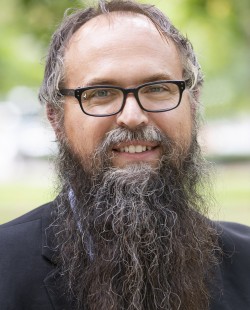Introduction
Gymnosperms and ferns represent two significant lineages of ancient plant life, each with unique reproductive strategies. Ferns are seedless vascular plants that reproduce via spores, while gymnosperms produce seeds and have developed adaptations that allow them to thrive in a variety of environments. The evolutionary competition between these groups intensified during significant climatic shifts, particularly during the transition from the Carboniferous to the Permian periods, which favored gymnosperms over ferns.
1. Ferns and Gymnosperms: Key Differences in Reproduction and Adaptation
Ferns reproduce through spores, which require moist conditions for germination and subsequent development into gametophytes. This dependency on water limits their distribution primarily to humid environments. In contrast, gymnosperms have evolved seeds that provide protection and nourishment to the developing embryo, allowing them to reproduce independently of water. This adaptation enables gymnosperms to colonize a wider range of habitats, particularly those that are drier.
Key differences include:
– Reproductive Strategy: Ferns rely on spores; gymnosperms produce seeds.
– Moisture Dependence: Ferns need moist environments for reproduction; gymnosperms can thrive in drier conditions.
– Survival Adaptations: Gymnosperms possess features like deep root systems and needle-like leaves that minimize water loss, enhancing their survival in less hospitable climates.
2. The Permian Climate Shift: From Warm, Humid to Cool, Dry Conditions
At the end of the Carboniferous Period (around 300 million years ago), Earth underwent a significant climate transition into the Permian Period. This shift was characterized by:
– Cooling and Drying: The climate became cooler and drier, leading to reduced humidity and the shrinking of swampy habitats where ferns thrived.
– Formation of Pangea: The assembly of continents into the supercontinent Pangea altered ocean currents and atmospheric patterns, contributing to widespread aridity in many regions[3].
This environmental change created conditions that were increasingly unfavorable for ferns while favoring the more drought-resistant gymnosperms.
3. Why the Climate Shift Favored Gymnosperms Over Ferns
The adaptations of gymnosperms provided them with distinct advantages during the Permian climate shift:
– Seed Adaptation: Gymnosperm seeds are encased in protective coats that allow them to survive adverse conditions, including drought.
– Nutrient Storage: Seeds store nutrients that support early growth, making them less reliant on immediate environmental conditions compared to spores.
– Morphological Features: Deep root systems allow gymnosperms to access water from deeper soil layers, while needle-like leaves reduce transpiration rates, further aiding survival in dry climates[4][5].
These traits enabled gymnosperms to expand their range significantly as ferns began to decline.
4. Expansion of Gymnosperms During the Permian and Mesozoic Eras
As the climate continued to dry, gymnosperms flourished:
– Geographic Spread: Gymnosperms such as conifers and cycads spread across formerly humid regions as they adapted to drier conditions.
– Dominance in Ecosystems: By the Mesozoic Era, gymnosperms had largely replaced ferns as the dominant flora in many ecosystems, establishing extensive forests that shaped terrestrial landscapes[6].
Their success continued for millions of years until angiosperms (flowering plants) began to emerge and compete with them later in Earth’s history.
5. Impact on Ecosystems and Future Plant Evolution
The rise of gymnosperms had profound effects on ancient ecosystems:
– Ecosystem Restructuring: As gymnosperms became dominant, they altered habitat structures and food webs, influencing animal life as well.
– Foundation for Future Evolution: The adaptations seen in gymnosperms set the stage for later evolutionary developments, including the emergence of angiosperms. Traits such as seed protection and drought tolerance remain crucial in many modern plant species[2][7].
Conclusion
The climatic shift from warm and humid conditions to cooler and drier environments during the Permian period provided significant advantages to gymnosperms over ferns. Their ability to produce seeds, coupled with adaptations for water conservation, allowed them not only to survive but also to dominate terrestrial ecosystems for millions of years. This evolutionary success illustrates how climate change can shape plant evolution and biodiversity over geological timescales.

Kyle Whyte is a notable scholar and professor at the University of Michigan, holding positions such as the George Willis Pack Professor in the School for Environment and Sustainability and Professor of Philosophy. Specializing in environmental justice, his work critically examines climate policy and Indigenous peoples’ ethics, emphasizing the nexus between cooperative scientific endeavors and Indigenous justice. As an enrolled Citizen Potawatomi Nation member, he brings a vital perspective to his roles as a U.S. Science Envoy and member of the White House Environmental Justice Advisory Council. His influential research is supported by various prestigious organizations including the National Science Foundation, and disseminated through publications in high-impact journals. Kyle actively contributes to global Indigenous research methodologies and education, with affiliations to numerous institutes and societies dedicated to traditional knowledge and sustainability. Recognized for his academic and community engagement, Kyle has earned multiple awards and served in various visiting professorships. His efforts extend to leadership positions on boards and committees focused on environmental justice nationwide.
